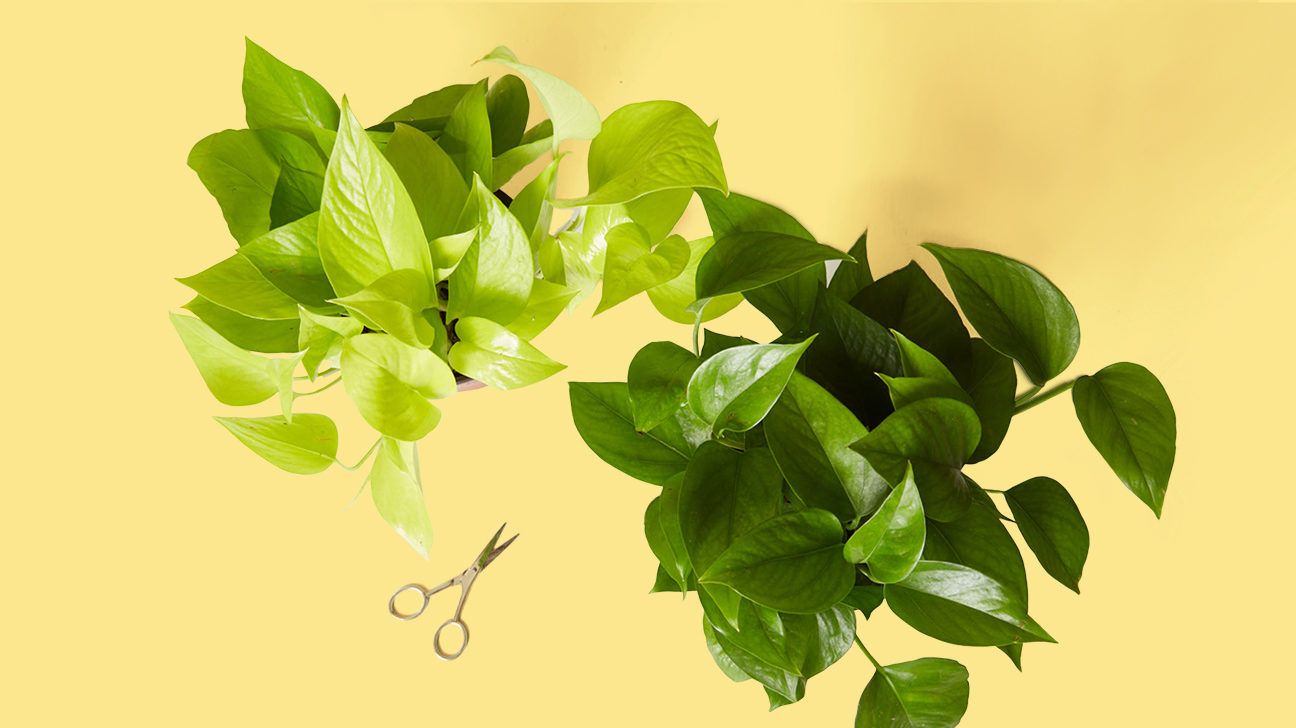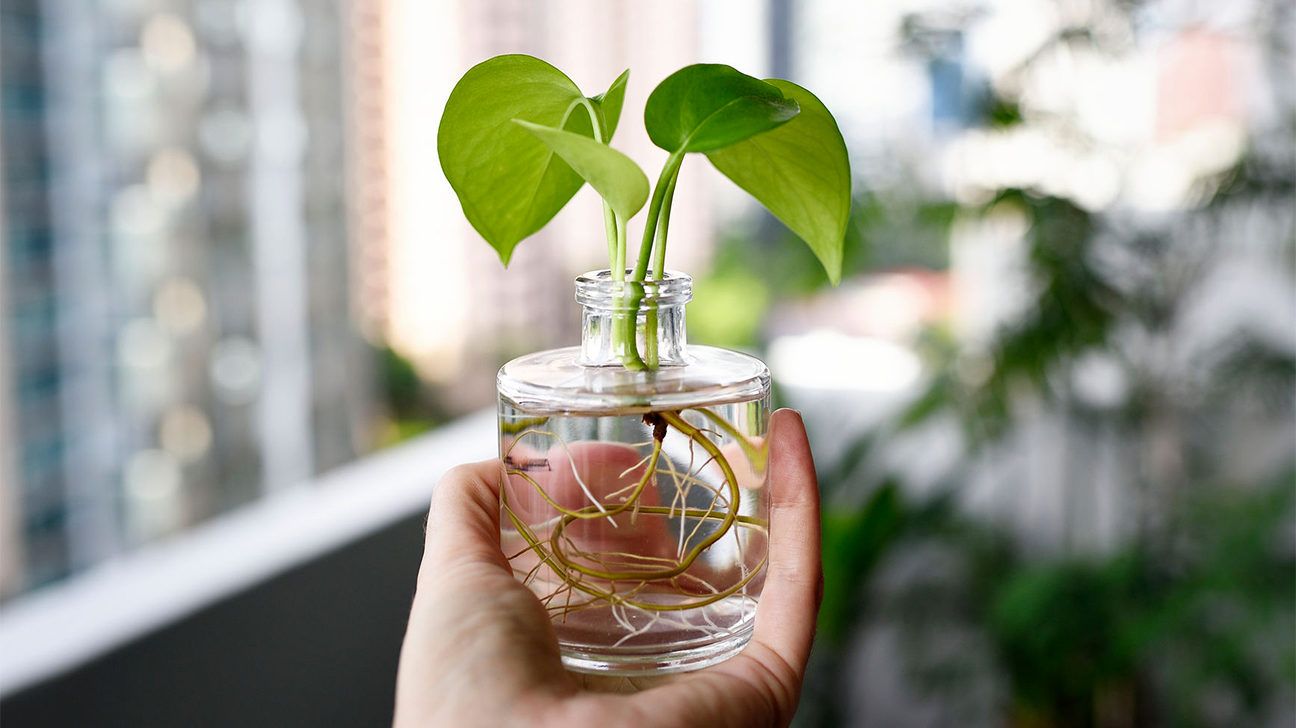Propagating plants might sound like a daunting task, but we’re not talking about the art of repopulating a national park here. This art of breeding a new plant from a part of your old plant is the love language of our generation. We think of it as akin to the millennial way of gifting a pet, without pet rent.
Propagating can be done via water or seeds. Our favorite plants to propagate at The Sill are the pothos plant (Epipremnum aureum) and the heartleaf philodendron (Philodendron hederaceum). These beauties are the simplest to share with a friend because their lives are a sentimental case of “just add water”!
If you know someone who doesn’t have plants at home, or you want a plant in your own home, follow our simple instructions on how to propagate it below:
Gather all materials: plant, scissors, glass vessel filled with water.

Snip your plant!
On a mature vine, look right below the leaf or stem/vine juncture and you’ll see a tiny brown root node. These tiny bumps are the key to propagating pothos and philodendrons. You’ll want to snip off a couple of inches of healthy stem right before a node and include a node or two with the cutting.
Remove any leaves too close to the node that might end up under water level when you stick your cutting into your glass vessel with water.
Place your glass vessel, with plant cutting, in a spot that gets bright to moderate indirect light. Do not place in strong direct light or super low light. Some dappled sun is ideal for a new cutting.
Be patient! Check root growth from the node on a weekly basis. Add fresh room-temperature water when needed.
You can replace the water every week or simply top off the vessel with fresh water when it’s looking low. If the water is murky, we recommend replacing it, both for aesthetics and for the health of the root system.
If you’d like to transplant your cutting from its glass vessel into a planter with potting mix, we recommend waiting until the root is an inch or longer. This should take 4 to 6 weeks.
Once the roots of the cutting are potted in fresh potting mix, saturate that mix and place in bright indirect light. Then let dry and treat like a regular houseplant.
If you want to keep it growing in water indefinitely, that’s also possible! Be careful, though, as the longer your cutting sits in water, the harder of a time it will have adapting to potting mix.
Chances are you have either the pothos plant (Epipremnum aureum) or the equally popular heartleaf philodendron (Philodendron hederaceum). These trailing plants are relatively easy to take care of, so they’re incredibly common house and office plants. You’ve probably confused the two before because they look so similar.
But step a little closer and you’ll see the differences!
The philodendron’s leaves tend to be more heart-shaped, hence its common name, while pothos leaves are more of a teardrop shape. The philodendron’s vines are slender and more flexible, and its leaves are thinner. The vines of the pothos are thicker and its leaves more waxy. The philodendron tends to start trailing straight from the soil, while the pothos tends to grow upward and then trail out.
If you want to get to know the plants more before you commit, visit us at TheSill.com.


